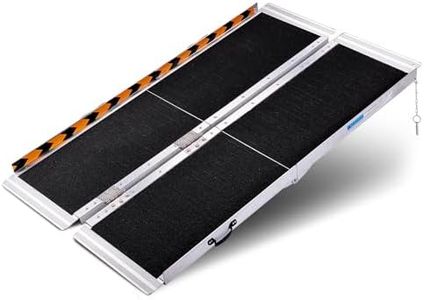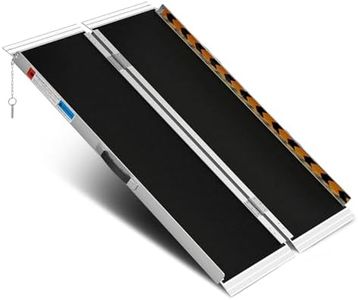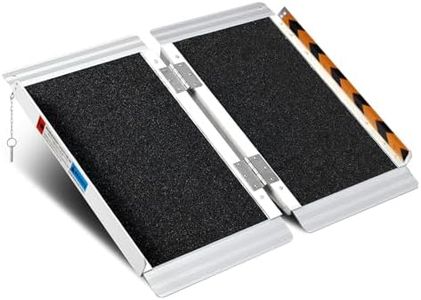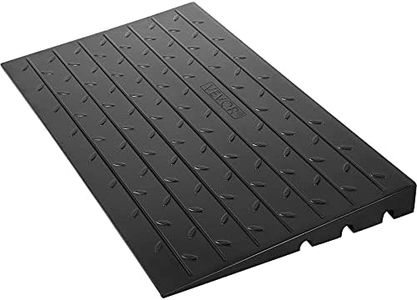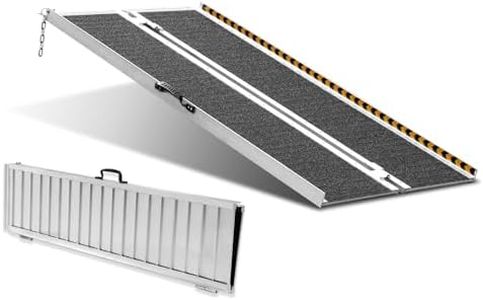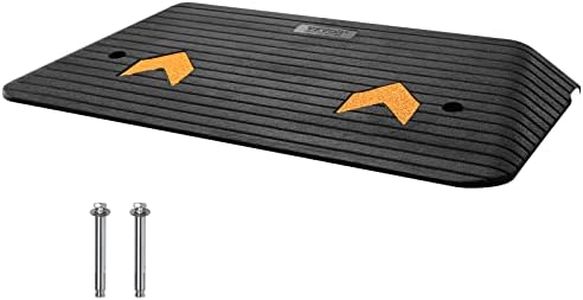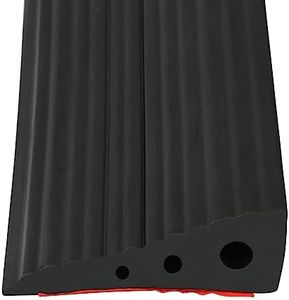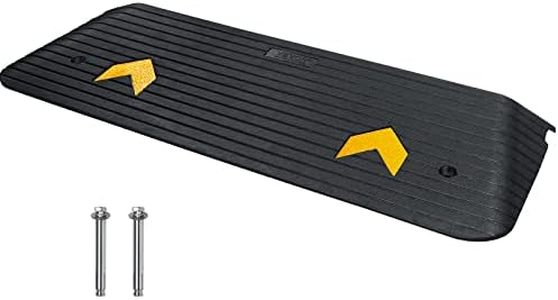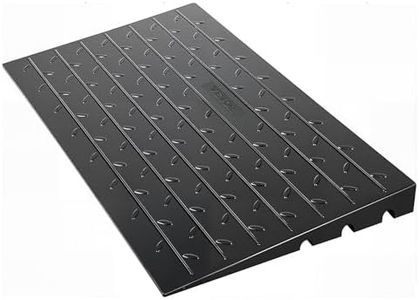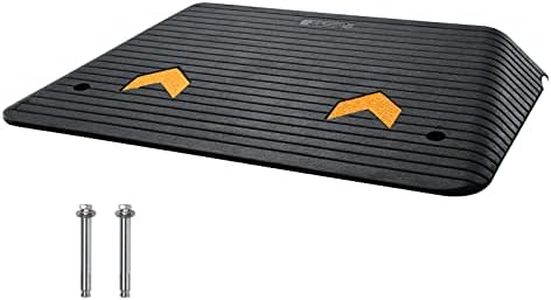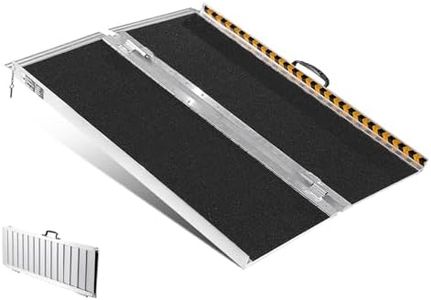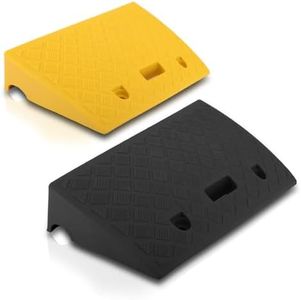We Use CookiesWe use cookies to enhance the security, performance,
functionality and for analytical and promotional activities. By continuing to browse this site you
are agreeing to our privacy policy
10 Best Threshold Ramps
From leading brands and best sellers available on the web.Buying Guide for the Best Threshold Ramps
Choosing the right threshold ramp is important to make transitions between different floor heights safer and easier, especially for people using wheelchairs, walkers, or strollers. The best ramp for you depends on the height difference you need to cross, how much space you have, and who will be using the ramp. A good approach is to measure carefully, think about the typical traffic at the threshold, and consider how permanent or portable you need the solution to be.Height CapacityHeight capacity is the maximum height difference that the ramp can safely bridge. This is crucial because choosing a ramp that's too short or too steep can be dangerous or unusable. To find the right ramp, measure the vertical rise (how tall the step or threshold is) and select a ramp that is rated to handle that height safely. For small rises like one inch, low-profile ramps are fine, while larger rises may require longer ramps for a gentler slope.
Ramp LengthRamp length is the distance from where the ramp starts on the ground to the top of the threshold. A longer ramp creates a gentler slope, which is easier and safer to use—especially for wheelchairs. In general, the steeper the threshold, the harder it is to cross. For wheelchair users, a longer ramp is almost always better, but make sure to check the available space so the ramp can fit comfortably.
Weight CapacityThis is the maximum weight the ramp can safely support, including both the user and their mobility device. This spec is important to prevent the ramp from bending or breaking. If you'll be using the ramp for wheelchairs, consider both the weight of the person and the wheelchair or scooter. Always choose a ramp with a higher weight rating than your total expected load for safety.
MaterialThreshold ramps are made from materials like aluminum, rubber, or plastic. The material affects the ramp's durability, weight, weather resistance, and look. Aluminum ramps are sturdy and lightweight, good for both indoor and outdoor use. Rubber ramps are heavy but grip surfaces very well and are often better for permanent indoor use. Think about whether you need to move the ramp often or leave it in place, and whether it will be exposed to the weather.
PortabilityPortability refers to how easy it is to move and store the ramp when it’s not needed. If you need a ramp that travels with you, look for lighter options or ones with handles. If the ramp will stay in one place, portability is less important. Matching portability to your lifestyle is key: choose a permanent option if the ramp is always in use, or a portable one for occasional or travel needs.
Surface TractionSurface traction is about how slip-resistant the ramp is, which keeps users safe when crossing—especially in wet or icy conditions. Ramps often have textured surfaces, grip tape, or raised patterns. If the ramp is to be used outdoors or by someone who is unsteady on their feet, look for models with high-traction surfaces.
